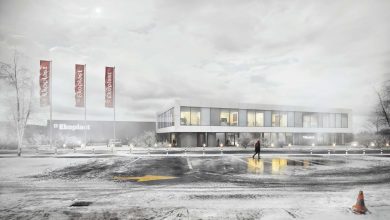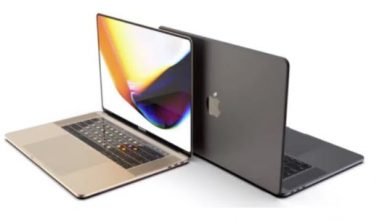Different types of flow meters and it’s features

Mass flowmeters
Flow meters under this category measure the mass flow rate of liquids passing through a tube or a pipe. For example or types of meter.
i)Thermal mass flow meters.
ii) Coriolis mass flow meters.
Volumetric flowmeters
These are flow meters that measure the volumetric flow rate of fluids moving through a specific area within a period. They give an instantaneous digital, analog, or pulse output of the volumetric flow rate of gas and liquid. Examples of volumetric flow meters include;
i)Annubar
ii) Vortex flowmeters
iii) Differential head type
iv)Venturi flowmeters
v) Differential Area type ( Rotameters)
vi) Orifice plates
vii) Ultrasonic flowmeters
viii) Positive Displacement Meters
ix) Electromagnetic flowmeters
X) Turbine flowmeters
1.Thermal mass flowmeters
Thermal mass types of meter measure the flow rate of gases passing through a closed pipe or conduit. It works by directing the flowing substance over a heated element and measuring the temperature of the musical material after and before the heating occurs.
The higher the mass flow moving through the heated transducer, the higher the current needed to preserve the differential temperature. Thermal mass flow meters are also known as immersible or thermal dispersion flow meters.
Each type approaches estimating the stream pace of a liquid in an alternate manner. We will take a gander at five fundamental sorts of flowmeters you can discover available today
Features of Thermal mass flowmeters
i)Thermal mass flow meters have inline style (flow bodies) or insertion style (probe), which supports two sensors at constant with the flowing gas.
ii) The accuracy of thermal mass flow meters is +1% to +2% of the flow rate.
iii) The lengths of the pipes upstream or downstream should be straight.
Iv) Thermal mass flow meters have a design pressure of 1200 PSIG.
vi) Their sizes are 15mm to 10000mm.
vi) They usually measure the flow rate of clean gases.
v) They have an ability range of 10:1 to 100:1.
vi) They have a temperature design of 176 degrees Celsius.
vii) The flow ranges from 0-2500 SCFM.
-
Coriolis mass flowmeters
Coriolis mass flow meters measure the mass flow rate of liquids and gases moving in a pipe through inertia. The acceleration by the small actuator gives a measurable twisting force proportional to the mass.
Features of Coriolis mass flowmeters
i)The accuracy of the flow rate ranges between + 0.15% to +0.5%.
ii) Their flow range is 0 to 25000 lb/m.
iii) They have a bidirectional flow measurement.
iv) Coriolis measures the flow rate of clean, dirty, slurries, viscous, and liquified gases.
v) The size ranges from 1.5mm to 150mm.
vi) The design pressure is 345 bar.
vii) The rangeability is 20:1.
viii) The temperature design is 200 to 426 degrees Celsius.
ix) They are commonly used in Hastelloy, titanium, and stainless steel.
-
Annubar
They measure the flow rate of gases, liquids, or steam moving through a pipe. It creates a blockage on the pipeline, which acts as an obstruction to the flowing fluid, thus giving out differential pressure. The differential pressure is always proportional to the square of the flowing fluid velocity.
Features of Annubar flowmeters
i)The accuracy of the differential pressure transmitter ranges from +0.1% to +0.3% of full scale error and + or -1% to + or -2% of the actual flow.
ii) The temperature design is up to 400 degrees Celsius.
iii) The rangeability is between 3:1 to 5:1.
iv) The downstream or upstream length of straight pipe of 20/5.
v) They measure the flow rate of clean liquids, gases, and steam.
vi) The pressure design is up to 55 bars (370 degrees Celsius) or 97 bars ( 38 degrees Celsius).
vii) The size ranges between 50mm to 3000mm.
viii) The temperature design is up to 400 degrees Celsius.
ix) They operate on stainless steel, brass, steel, and Hastelloy.
-
Vortex flowmeters
Vortex flow meters measure the velocity of the fluid flowing in the pipe where it generates swirling on a repeating pattern of vortices. The working principle is usually known as the vortex shedding principle.
Features of vortex flowmeters
i)The accuracy ranges + or -1% to + or – 1.5% on gases and + or – 0.5% to + or – 1% on liquids.
ii) The downstream or upstream straight length of 20/5.
iii) The velocity ranges between 6 to 80 m/s on gases and 0.3 to 10 m/s on liquids.
iv) The rangeability ratio is 20:1.
v) The pressure design is 138 bars.
vi) A size of 15mm to 300mm.
vii) It has a temperature design of -200 to 400 degrees Celsius.
viii) MOC is in plastics and stainless steel.
ix) They measure the flow rate of clean liquids and clean and dirty gases.
5.Venturi flowmeters
Venturi flow meters measure the liquid flow rate using a differential pressure drop where an increase in the fluid velocity decreases the pressure exerted by the Venturi tube.
Feature of Venturi flowmeters
i)There size ranges between 25mm to 3000mm
ii) It has no limitation on the design pressure and temperature.
iii) The flow range I limited in beta ratio and specific pipe size.
iv) The rangeability ratio is from 3:1 to 5:1.
v) The downstream and upstream straight length of 20/5.
vi) The accuracy ranges from + or – o.25% to + or – 0.75% for actual flow. On the Differential pressure, it ranges between+ or – 0.1% to + or – 0.3 on full scale error.
-
Orifice plates
Orifice plates measure the flow rate of fluids with suspended solids. The most common type used is the concentric orifice plate.
Features of Orifice plates
i)The accuracy of the DP transmitter ranges between + or – 0.1% to + or – 0.3% of full scale error and + or – 0.25% to + or – 0.5% for actual flow rate.
ii) The temperature and differential pressure transmitters do not limit pressure design.
iii) The maximum size is the size of the pipe.
iv) They measure the flow rate of cryogenics, clean liquids, gases, and steam.
v) The rangeability ranges between 3:1 to 5:1.
vi) The downstream and straight upstream length of 20/5.
vii) The MOC: has no limit. It measures Monel, nickel, steel, and hastelloy.
Conclusion
Various types of meter have different design features depending on the application area and the style of fluids to be measured. The system engineers can help you choose the best for your application. You can search more about the features of the types of meter listed above.





